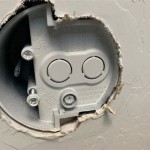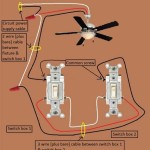How Can I Hang a Tapestry on the Ceiling Without Damaging the Wall?
Tapestries can add a touch of elegance and artistic flair to any room. Hanging a tapestry on the ceiling can transform a space, creating a unique focal point and adding a sense of depth and dimension. However, hanging a tapestry on the ceiling can be a challenge, especially if you want to avoid damaging your walls. This article will explore several methods for hanging a tapestry on the ceiling without causing any harm to your walls.
1. Use Adhesive Hooks
Adhesive hooks are a convenient and damage-free option for hanging lightweight tapestries. Look for hooks specifically designed for use on ceilings, as they are usually stronger and more reliable. These hooks typically feature a strong adhesive backing that bonds to the ceiling without leaving any residue. However, it's imperative to ensure the adhesive hook is compatible with your ceiling surface. Before applying the hook, clean the ceiling surface with rubbing alcohol to remove dust and debris. Allow it to dry completely before adhering the hook. Ensure the weight of the tapestry does not exceed the hook's weight limit. Remember to apply pressure evenly on the hook for at least 30 seconds to ensure a strong bond.
2. Employ Command Strips
Command strips, similar to adhesive hooks, offer a damage-free solution for hanging lightweight tapestries. These strips feature an adhesive that adheres to the ceiling without damaging the paint. Choose Command strips specifically designed for hanging heavier objects, as they provide stronger holding power. Before applying the strips, clean the ceiling surface thoroughly with rubbing alcohol. Once dry, apply the strips to the tapestry and press them firmly against the ceiling. Ensure the weight of the tapestry does not exceed the strip's weight limit. Command strips are reusable; however, they may leave a slight residue on the ceiling when removed. To remove the strips, pull them slowly and gently from the edge, avoiding any sudden jerking movements.
3. Utilize Ceiling Hooks
Ceiling hooks are a more permanent solution for hanging heavier tapestries. These hooks are typically made of metal and are designed to be screwed into the ceiling. However, this method can be more invasive, as it requires drilling into the ceiling. Consider using a stud finder to locate a stud before installing a hook, ensuring that the hook is securely fastened. This will minimize the risk of the hook pulling away from the ceiling. If you're unsure about drilling into the ceiling, consult with a professional contractor or handyman who can assess the best approach for your specific situation.
4. Employ a Tension Rod
A tension rod can be a convenient and versatile option for hanging tapestries on ceilings. These rods typically consist of a metal or plastic rod that expands to fit the width of the ceiling. Tension rods are often used in bathrooms and closets for hanging clothes, but they can also be used for tapestries. Install a tension rod by expanding it until it fits securely between two ceiling beams or walls. Then, drape the tapestry over the rod, ensuring it is evenly distributed. Tension rods are a good option for lightweight tapestries, but their weight capacity can vary, depending on the specific rod.
5. Create a Hanging System With String or Wire
A simple and elegant way to hang a tapestry on the ceiling is to use string or wire. This method involves attaching a string or wire to the tapestry and then securing it to the ceiling using hooks or nails. Choose a robust string or wire capable of supporting the tapestry's weight. Attach the string or wire to the tapestry using a strong knot or a sewing machine. Once the string or wire is attached to the tapestry, secure it to the ceiling using hooks or nails positioned strategically to ensure even weight distribution. This method allows for flexibility in adjusting the tapestry's height and position.
It's crucial to consider the tapestry's weight and the ceiling surface when selecting a hanging method. Lightweight tapestries can be hung using adhesive hooks, Command strips, or tension rods, while heavier tapestries may require ceiling hooks or a more robust hanging system. When in doubt, consult a professional to ensure that the tapestry is securely hung and that no damage occurs to the ceiling.

Putting Up My Tapestries Walltapestry Ceilingtapestry Tapestry Thenames Fish Tiktok

How To Hang A Tapestry 8 Diffe Ways Architectural Digest

Tapestry Hanging With No Holes From Walls Ceilings Without Damaging Drywall In 2 Minutes Or Less

8 Ways To Hang A Tapestry At Home How Interiors By Jacquin

How To Hang Tapestries From The Ceiling Without Holes In Your Drywall

8 Ways To Hang A Tapestry At Home How Interiors By Jacquin

How To Hang A Tapestry In Dorm Room Without Damaging The Walls

8 Ways To Hang A Tapestry At Home How Interiors By Jacquin

How To Hang A Tapestry Leafysouls

How To Decorate Dorm Walls Without Damaging Them Havenly Interior Design Blog
Related Posts








